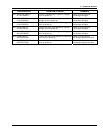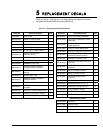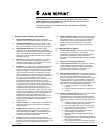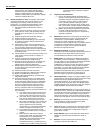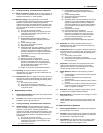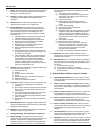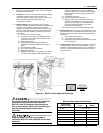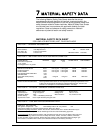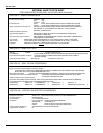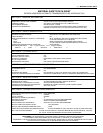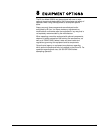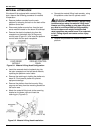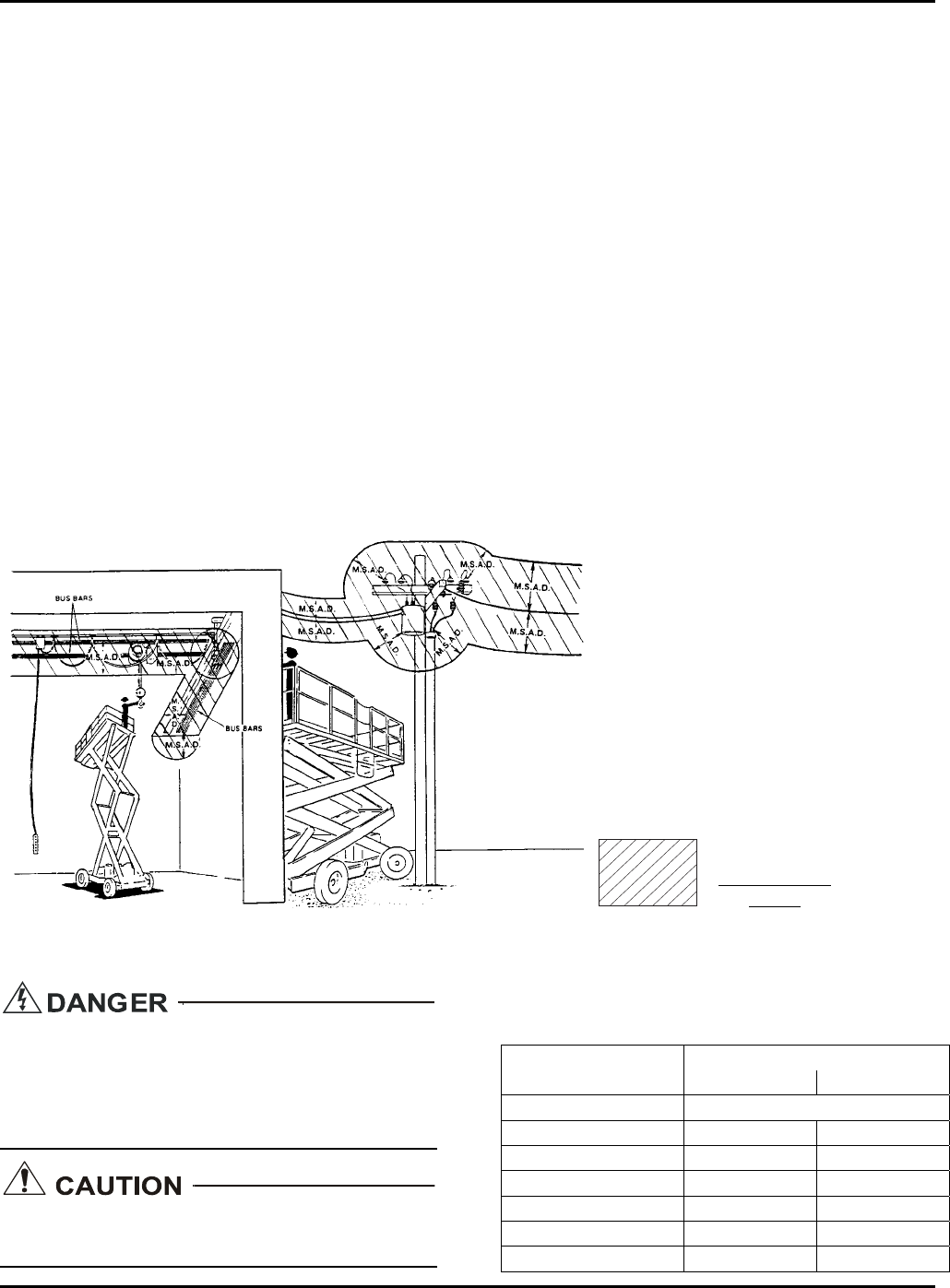
6 — ANSI REPRINT
Elevating and Rotating Aerial Devices. These manuals shall
be stored on the mobile unit.
11.4 Training. The renter or lessor shall offer training or training
materials that aid the renting entity or lessee in the
operation, inspection, testing and maintenance of the aerial
device. This training shall be offered initially and
subsequently on request.
11.4.1 General Training. Only personnel who have received
general instructions regarding the inspection, application and
operation of aerial devices, including recognition and
avoidance of hazards associated with their operation, shall
operate an aerial device. Such items covered shall include,
but not necessarily be limited to, the following issues and
requirements:
(1) The purpose and use of manuals.
(2) That operating manuals are an integral part of the
aerial device and must be properly stored on the
vehicle when not in use.
(3) A pre-start inspection.
(4) Responsibilities associated with problems or
malfunctions affecting the operation of the aerial
device.
(5) Factors affecting stability.
(6) The purpose of placards and decals.
(7) Workplace inspection.
(8) Applicable safety rules and regulations, such as Part
4, ANSI C2-1997, National Electrical Safety Code
(applies to utility workers as defined in ANSI C2).
The above standard is an example; other industries
using aerial devices have safety rules pertinent to
that industry.
(9) Authorization to operate.
(10) Operator warnings and instructions.
(11) Actual operation of the aerial device. Under the
direction of a qualified person, the trainee shall
operate the aerial device for a sufficient period of
time to demonstrate proficiency in the actual
operation of the aerial device.
(12) Proper use of personal fall protection equipment.
11.4.2 Familiarization. When an operator is directed to operate an
aerial device he/she is not familiar with, the operator, prior to
operating, shall be instructed regarding the following items
and issues:
(1) The location of the manuals.
(2) The purpose and function of all controls.
(4) Safety devices and operating characteristics specific
to the aerial device.
11.5 Communications. In the event the manufacturer or installer
provides the renter or lessor manuals, bulletins, or other
materials for the information of the user of an aerial device,
the renter or lessor shall pass them on to the user without
any undue delay.
DENOTES
PROHIBITED
ZONE
Figure 6-1. Minimum Safe Approach Distances
Do not allow machine, personnel, or conductive
materials inside prohibited zone. Maintain
M.S.A.D. from all energized lines and parts as
well as those shown. Assume all electrical parts
and wires are energized unless known
otherwise.
39
Diagrams shown are only for purposes of
illustrating M.S.A.D. work positions, not all work
positions.
Minimum Safe Approach Distances
Minimum Safe Approach Distance
Voltage Range
(Phase to Phase)
(Feet) (Meters)
0 to 300V Avoid Contact
Over 300V to 50KV 10 3.05
Over 50KV to 200KV 15 4.60
Over 200KV to 350KV 20 6.10
Over 350KV to 500KV 25 7.62
Over 500KV to 750KV 35 10.67
Over 750KV to 1000KV 45 13.72



